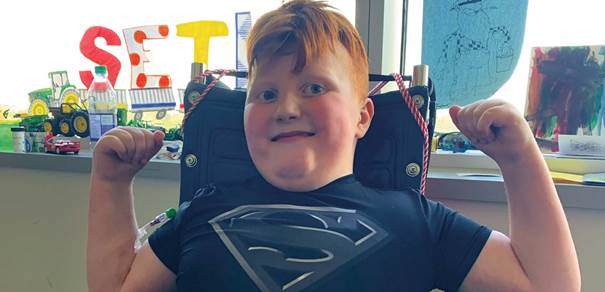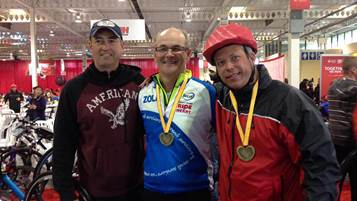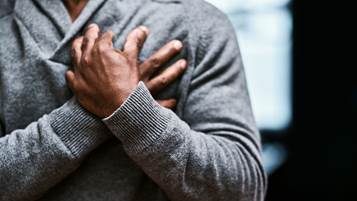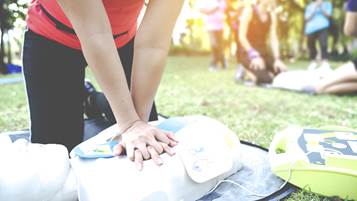What is an AED?
An automated external defibrillator (AED) is a safe, easy-to-use, portable device that can deliver an electric shock to a person in cardiac arrest, if needed to restart their heart.
If someone suddenly collapses, loses consciousness, is unresponsive to touch or sound, and is not breathing normally or making gasping sounds, that person is in cardiac arrest. Their heart has stopped beating, and blood is no longer flowing to the brain and other vital organs. Nine in 10 out-of-hospital cardiac arrests will result in death without immediate intervention.
But you can help save a life if you respond quickly and take these actions.
- Call 9-1-1 for help and shout to another bystander to get an AED.
- Start CPR (cardiopulmonary resuscitation) right away.
- Use an AED as soon as one is found to restart the heart.
Doing CPR – placing the heel of your hand in the centre of the chest, interlocking the fingers of your other hand on top, and pushing hard and fast – keeps the blood circulating, but does not restart the heart. An AED can. The portable device can deliver a shock to the person’s heart, if it’s needed to resume its natural rhythm.
60,000
out-of-hospital cardiac arrests happen each year in Canada.
An AED is easy to use
Anyone can use an AED. You don't have to be a medical professional.
The device is smart – it will only administer an electrical shock to a heart that needs it. You cannot hurt the person, you can only help!
Cardiac arrest can strike anyone, anywhere, anytime, at any age, often without warning. Each year in Canada, an estimated 60,000 cardiac arrests occur outside of hospital - that is one every nine minutes. If you perform CPR and use an AED on a person in cardiac arrest, their chance of survival can double.
AEDs may look different but they work the same
AEDs are available in various models, but they all operate in fundamentally the same way. You can use an AED by following three basic steps:
- Turn the power on. Either open the lid or press the power button. All AEDs give voice prompts. They also display clear, simple visual instructions.
- Attach the AED pads to the person’s bare chest. There will be an illustration on the AED pads; place the pads exactly as shown in the pictures.
- Press the shock button if the voice prompt tells you to. If no shock is advised, continue doing CPR until emergency medical services arrive.
Watch this short video to learn how to use an AED in 90 seconds
Restarting more hearts in Canada
Since 2010, Heart & Stroke, together with funding partners, has placed more than 15,000 AEDs in communities across Canada. Our nationwide network of more than 8,000 resuscitation instructors continues to train hundreds of thousands of Canadians each year – from members of the general public to healthcare and emergency services professionals in CPR and AED use. But more work needs to be done because too many lives are still being lost to cardiac arrest.
Our goals are:
- doubling the cardiac arrest survival rate,
- increasing bystander CPR and AED use, and
- improving outcomes for those impacted by cardiac arrest including survivors, lay responders and families.
Learn more about our Restart a Heart initiative



